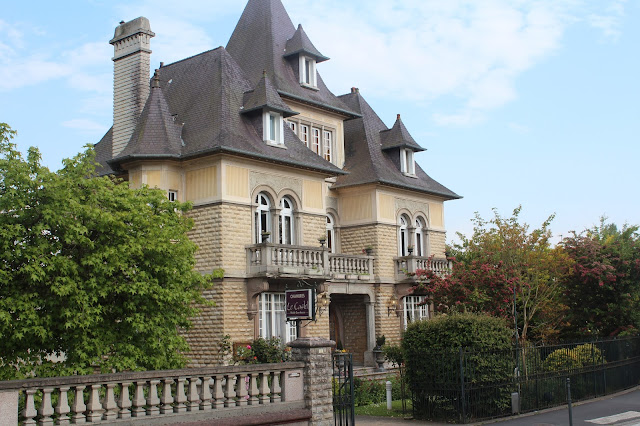Oh My! It's not Potato Peel Pie, but we are actually in Bayeux! Once the Capital City of the Celts, it is such a beautiful town, with the most wonderful people. I would love to live here and learn French. The view from our bed and breakfast hotel is exquisite, both day and night. Lee was able to capture the Notre Dame Cathedral at Bayeux at both times without leaving our room.
One of the interesting and fascinating things that I (me, Alana) have enjoyed in visiting these magnificent cathedrals is seeing how differently the 13 Stations of the Cross are done. When I worked at the San Juan Capistrano Mission, the paintings of the 13 stations were only about 200 years old and very dark, with little color or light. Below are two that were in the Bayeux Cathedral, which are quite bright and colorful - and over 500 years old.
The visit to the Bayeux Tapestry Museum was a highlight that we shall not soon forget. Because of the length and weight of the tapestry, it was hard to figure out a way to exhibit it in a way that would keep it preserved and undamaged. Hanging it, for exhibition presented many problems so a solution had to be found in order to protect it. The decision to place it on a round exhibit makes it so the visitors may view each scene separately by number, while listening to the commentary on the scene, and walking around it as music plays in the background of the narration. This makes the story very easy to follow and understand. The Bayeux Tapestry, after surviving so many historical upheavals was rescued only a few years ago from a large wooden chest in the Bayeux Cathedral, where it was displayed once a year for centuries. Embroidered so many centuries ago in a monastery, it is now listed as "A Memory of the World" by UNESCO, and hopefully will be preserved for more centuries to come.
The real importance of this tapestry lies in the depiction of the culture of the Norman era. Historians have used the tapestry to learn how the people dressed, how they fixed their food, what their entertainment was, what animals and plants were part of everyday life, what weapons were used, and how soldiers were outfitted. The above scene is a soldiers' feast.
This scene shows many of the preparations for battle that each army needed to make. Notice the horses, and those carrying shields and flags. About 8,000 soldiers total took part in the battle of Hastings.
The above scene shows Harold taking an arrow to the eye, which was fatal. After he was killed, the English surrendered to the Normans, which changed the Anglo-Saxon blood line to a Norman-Anglo blood line. This had a great effect on the descendants of these peoples.
The above scene is the last one and ends the historic battle of Hastings in 1066. So it is that we are off to the historic battle of Normandy of June 6, 1944, which took place this time on the opposite side of the English Channel from the Battle of Hastings and William and Harold's conflict.
We ended our perfect day with a perfect meal! A Caesar salad, like no other, at a sidewalk cafe.
We ended our perfect day with a perfect meal! A Caesar salad, like no other, at a sidewalk cafe.










No comments:
Post a Comment